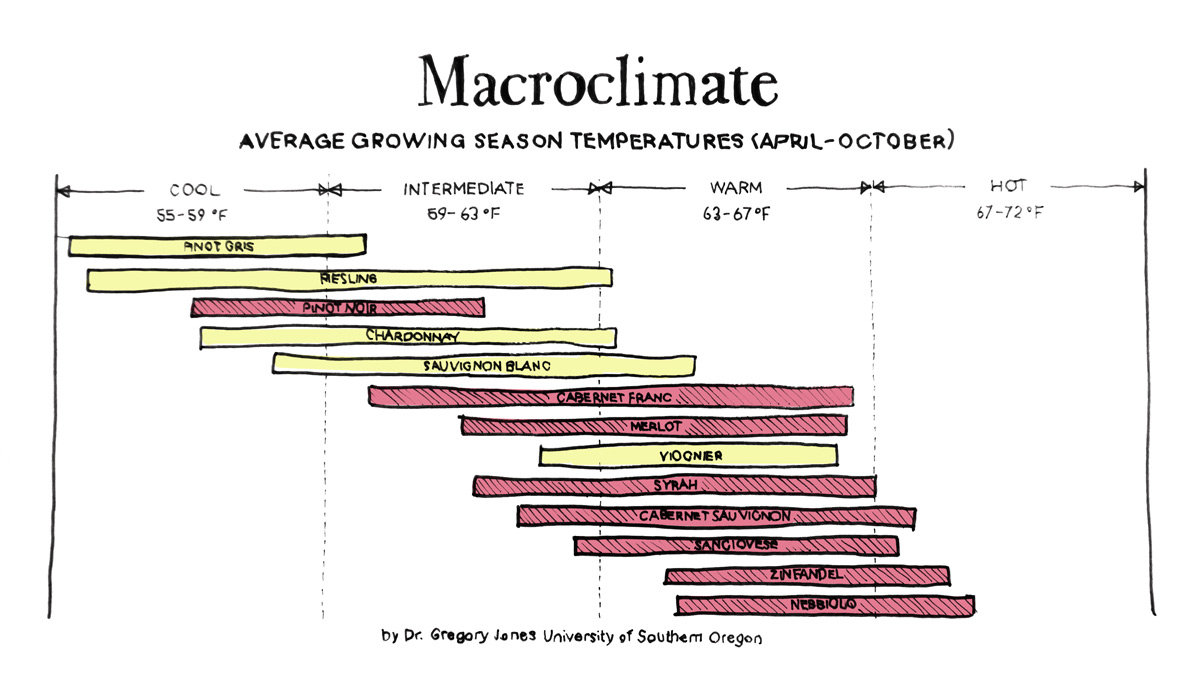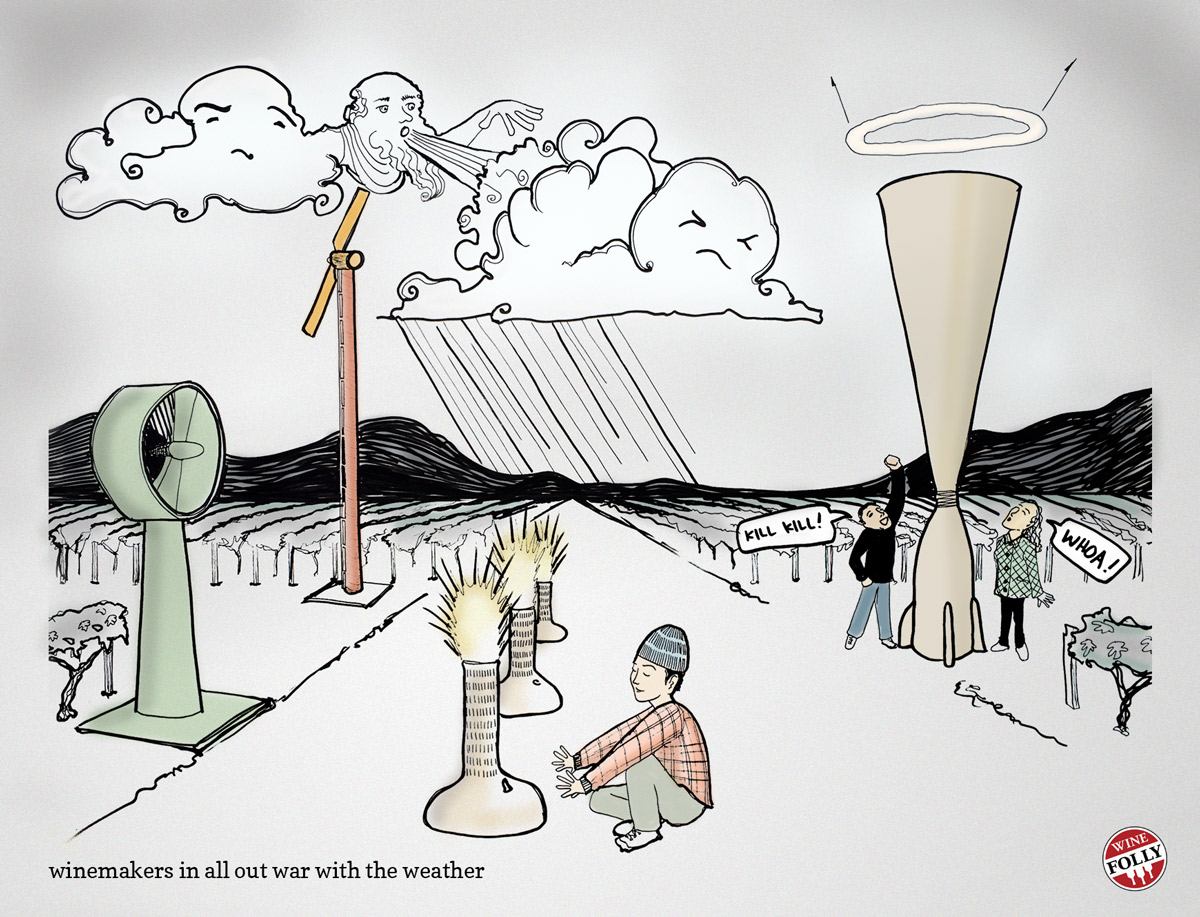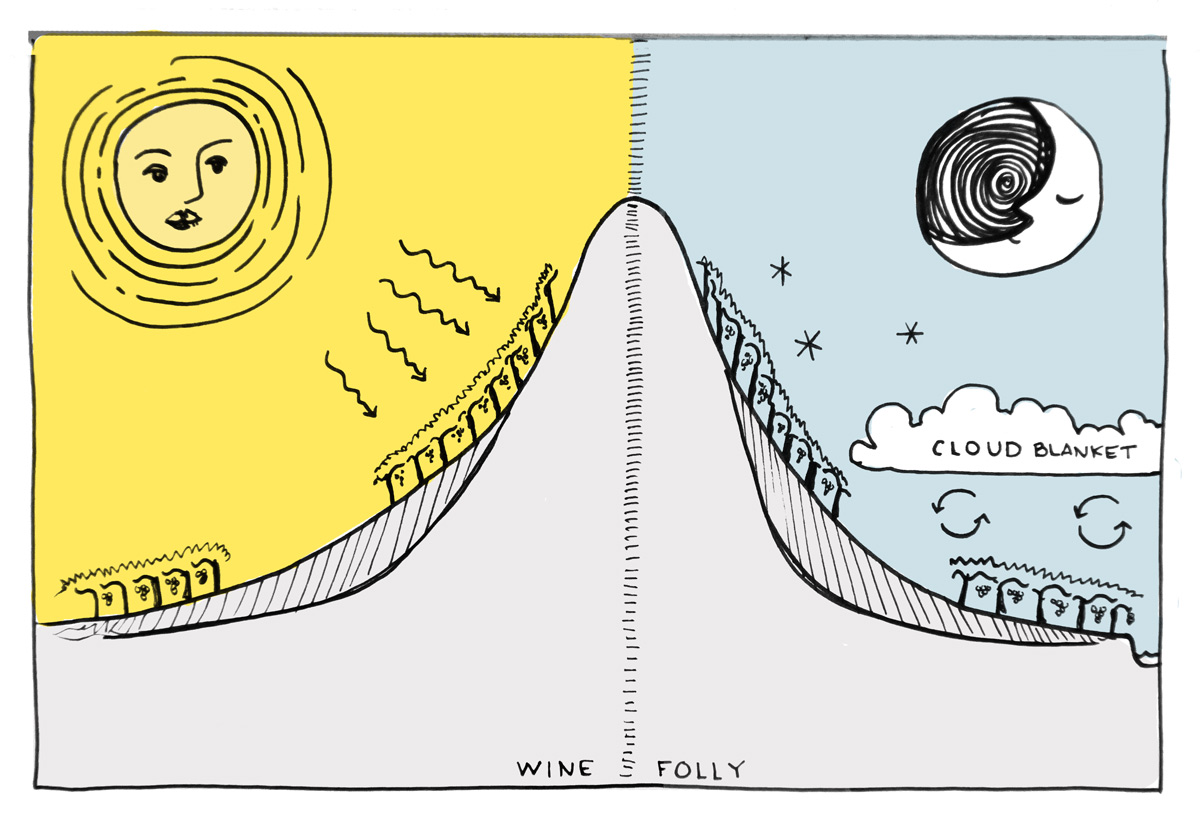Wine geography goes a lot farther than mapping your way to the nearest wine shop and navigating to the next bottle. You’ve probably heard that great wine begins in the vineyard; but if you step back and get a wider perspective, you’ll realize there are a lot of geographic influences on what makes a plot of land particularly special for making wine. When it comes to how geography influences wine, there’s no one rule that guarantees great wine; it’s more of a matter of connecting the dots – 5 dots to be exact: temperature, climate, elevation, soil type, and geopolitics.

The digital version of this chart can be viewed here.
Seasonal Growing Temperature
From the moment the fruit blossoms burst, to the day of the harvest, the grapes are in a race to ripen, and average temperature is one factor that determines when – and if – they’ll cross the finish line. Grapes ripen at different speeds, which means that average temperature is a huge component in terms of determining which varieties should be planted in each region. Pinot Noir and Chardonnay are some of the first grapes to be harvested and grow best with an average temperature of between approximately 57 and 63°F. Zinfandel, on the other hand, is a grape that needs more heat (closer to 64-69°F).
In general, warmer climates allow grapes to fully ripen and mature, developing deep pigments, bold fruit flavors, greater sweetness, and higher alcohol content. On the flip side, cooler climates show a softer side, accentuating white wines’ minerality, maintaining juicy acidity, and ensuring a delicate dance of flavors across the palate. During blind tastings these characteristics help quickly classify a wine as a warm or cool climate wine, and help identify exactly where a particular wine came from and how it grew up on the vine.
Climate
Beyond average temperature, climate takes into account the weather patterns and atmospheric conditions that can develop – or destroy wine grapes. These factors include things like rainfall, humidity, wind, frost, hail, and quality of sunlight, which will impact everything from a grape’s skin thickness (tannins!) to the effectiveness of anti-fungal chemical sprays designed to fight off vine mold.
Depending on what scientist you talk to (and how many glasses of wine they’ve had on that particular day), there are dozens of ways to classify climate: by average temperature (warm vs. cool climate), by scale (macroclimate, mesoclimate, microclimate), or by general climate groups (Mediterranean, Maritime, or Continental, for example). The best vintages usually result from stable climates that allow for slow, steady ripening, without heavy rainfall or extreme temperatures.
Read on about French Malbec vs. Argentine Malbec
Elevation
From terraced sloping hills to deep down in the valley, elevation affects how grapes grow. High altitude does two things that benefit certain wines:
- cooler temperatures at night
- a longer growing seasons
Chilly nights at high altitudes mean greater diurnal temperatures (the range between daytime and nighttime temperatures), which help grapes conserve their acidity and lead to more elegant, age-worthy wines. Moral of the story? Chilly nights on the vine, wine lives a long time.
Mountain and hillside vineyards also tend to receive more direct and concentrated sunlight (which leads to greater color concentration and stronger tannins).
Soil Type
As usual, dirt doesn’t get the credit it deserves. Soil type – including sand, clay, dirt, pebbles, rocks, and dozens of combinations in between – plays a big role in how grapes grow up and to the kinds of wine that they become. Soil type determines the availability of nutrients, water drainage, water retention, and can even moderate temperature in a vine’s immediate microclimate.
Far from the nutrient-rich potting soil you use for house plants, grape vines actually perform better when nutrients are scarce and roots aren’t swampy. These conditions cause the vine to focus more energy on survival and less energy on growing grapes, which means that the vine gives off fewer clusters – and each grape has more character, concentration, and quality. As a result, sandy soil vineyards tend to produce more elegant wines than clay-based soils; and clay-based soils tend to produce bolder, more structured wines.
Geopolitics
In the world of wine, crossing borders is quite literally a game changer. While there exists universal consensus that wine is great, we don’t all agree on how it should be made or what should be printed on the label. As far as wine is concerned, the laws of the land are usually designed to do one of two things: (1) fight against wine fraud (by standardizing wine labels, protecting designations of origin, and systems of wine classification), or (2) protect the consumer (by regulating additives and production procedures). It seems relatively straight forward, but the way it plays out in the real world is … somewhat maddening.
For example, in the US, in order for a wine to be labeled as a Pinot Noir varietal, it only needs to contain a minimum of 75% Pinot Noir. In Australia that benchmark is 85%, and in France, most bottles labeled “Bourgogne Rouge” are produced solely from Pinot Noir. Confused yet? Fill up your glass – it gets worse.
Not only does every country have its own rulebook (on the national, regional, and local level), but each country makes up their own regulatory systems for quality.




